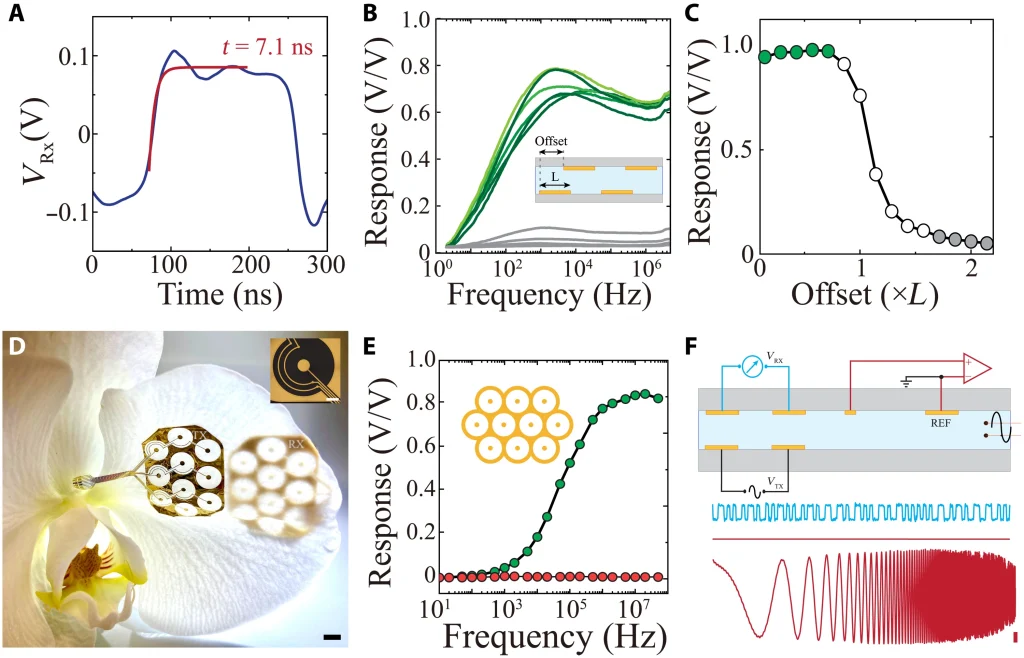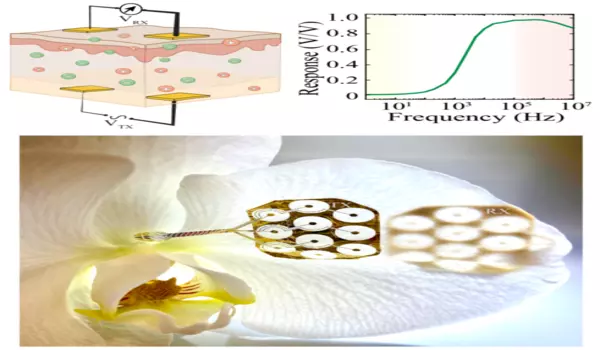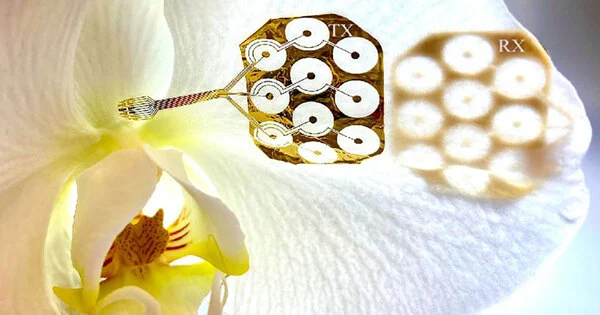Implantable bioelectronics are becoming increasingly important in healthcare. Pacemakers, for example, can help guarantee that a patient’s heart beats normally, while neural interface devices can aid patients with epilepsy and other illnesses by stimulating specific brain regions to alleviate neurological symptoms, or even link a paralyzed patient’s brain with robotic limbs. However, one key problem that implanted bioelectronics encounter is transferring data from the body to external devices for further analysis and diagnosis by physicians and scientists. Researchers have developed a method for augmenting implantable bioelectronics with cheap, high-speed, low-power wireless data lines based on ions, positively or negatively charged atoms found naturally in the body.
Implantable bioelectronics are becoming increasingly important in helping or monitoring the heart, brain, and other crucial organs, but they frequently lack a safe, dependable method of transmitting data to doctors. Although cables provide a quick and easy means to transmit data from implants to external machines, the manner in which they penetrate tissue limits their long-term use. At the same time, traditional wireless techniques based on radio waves or visible light frequently fail to penetrate organic tissue. One intriguing communication mechanism that bioelectronics could employ is one that the body frequently employs: ions. Ions are shuffled about inside the body on a regular basis by cells in order for them to communicate with one another.

Columbia Engineering (New York, NY, USA) researchers have invented a method for using the body’s ions to transport data at megahertz speeds—that is, millions of bits per second.
Because living tissues are ion-rich, they store electrical potential energy in the same way that electric batteries do. The new technology, known as ionic communication, takes advantage of this characteristic to assist implanted bioelectronics in exchanging data with external equipment. Ionic communication entails one set of electrodes implanted within a tissue and another pair of electrodes sitting on the tissue’s surface. The implanted gadget encodes data in the form of alternating electric pulses that are stored in the tissue. In turn, the surface receiver may detect and decode this radiation. In the new paper, the researchers described what geometric features regulate the depths to which ionic communication may extend inside the body and ways of establishing multiple parallel lines of communication between electrodes. They discovered that ionic communication could transport data over long distances, allowing it to target a wide range of tissue types, from human skin to visceral organs.
Using ionic communication, the scientists produced a fully implanted brain interface for rats in trials. They demonstrated that it could gather and transmit brain data from freely moving mice non-invasively over a period of weeks with enough stability to isolate signals from individual neurons. The scientists reached 60 megahertz communications rates by using ten communications cables and commercially available devices. According to their estimates, a single ionic communication line might theoretically attain communication rates of up to 14 megahertz.

The scientists point out that ionic communication requires much lower voltages and power than radio or ultrasonic transmission. Their investigations also demonstrated that their ionic communication device was hundreds to millions of times more energy-efficient than existing technologies employed with implantable bioelectronics for data exchange. Ionic communications devices can be made from materials that are soft, flexible, commercially available, biocompatible (that is, not harmful to living tissues) and even biodegradable, implying that they could easily find use in practical implantable devices that dissolve away once no longer required. The researchers’ next goal is to integrate ionic communication with organic transistors in an implanted biosensor.
“Ionic communication is a biologically based form of data communication that establishes long-term, high-fidelity interactions across intact tissue,”
Dion Khodagholy, an associate professor of electrical engineering at Columbia University.
This latest discovery builds on the team’s ultimate goal of connecting bioelectronic devices to the human brain. Scientists, for example, recently discovered a material that allows ionic signals to be conducted exclusively in specified directions. This can aid scientists in developing circuitry that uses ions rather than electrons to better interface with the body. Ordinarily, such circuits would not function if ions could move in all directions, causing undesired interference between various components of each circuit. The novel “anisotropic ion conductor” is a soft, biocompatible composite material that could be useful in implantable bioelectronics, and the techniques for creating it are simple and scalable.
“Ionic communication is a physiologically based form of data transfer that establishes long-term, high-fidelity connections across intact tissue,” said Dion Khodagholy, an associate professor of electrical engineering at Columbia University and co-senior author of the work. “The novel material we created has unique features that allow for the development of large-scale organic bioelectronic devices, which can improve their translation to human health applications.” Next, we want to create compact and complicated anisotropic-ion-conductor-based integrated circuits for bioelectronics applications using a large number of organic transistors.





